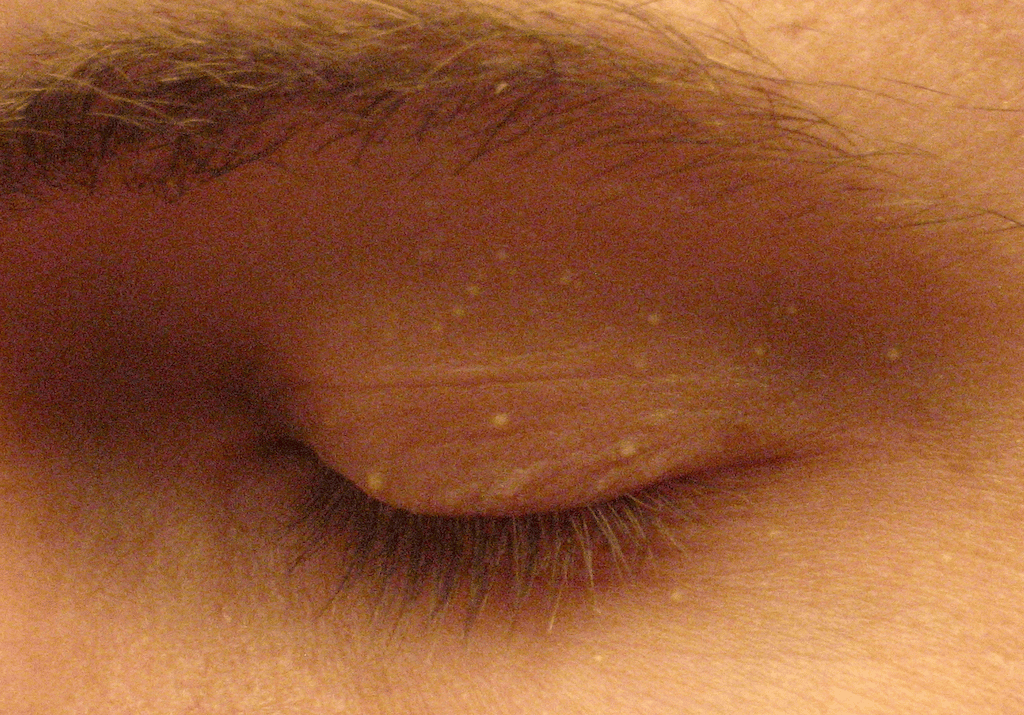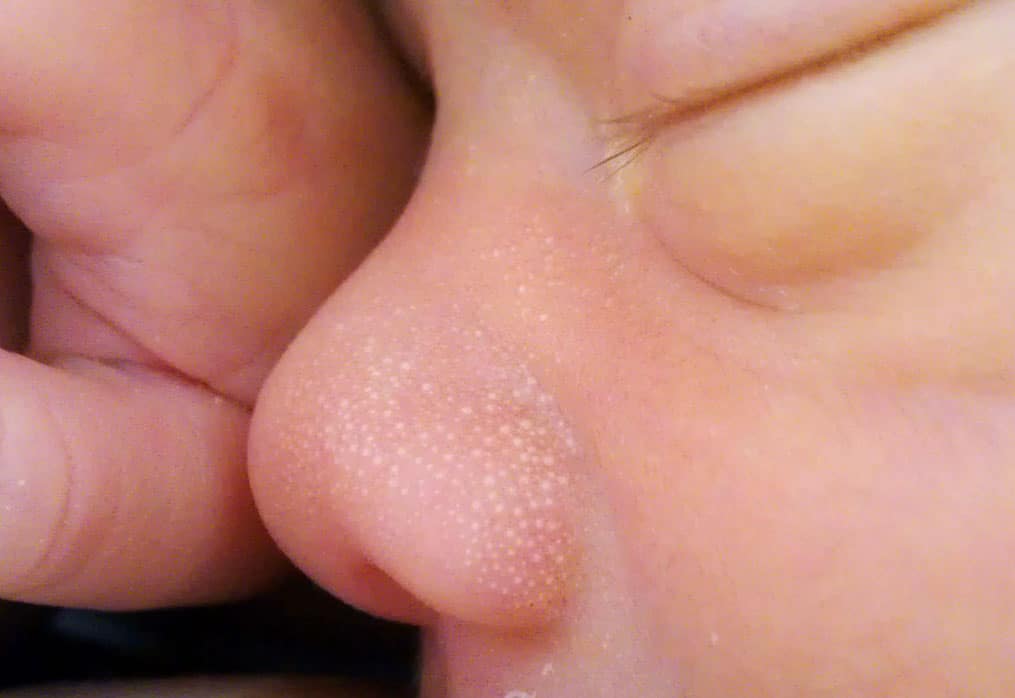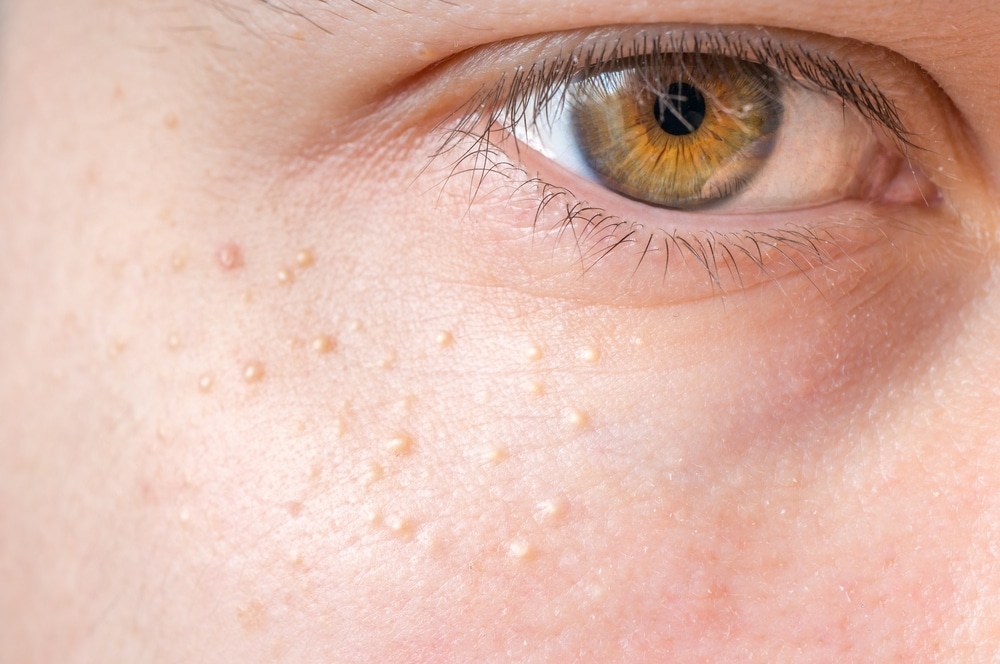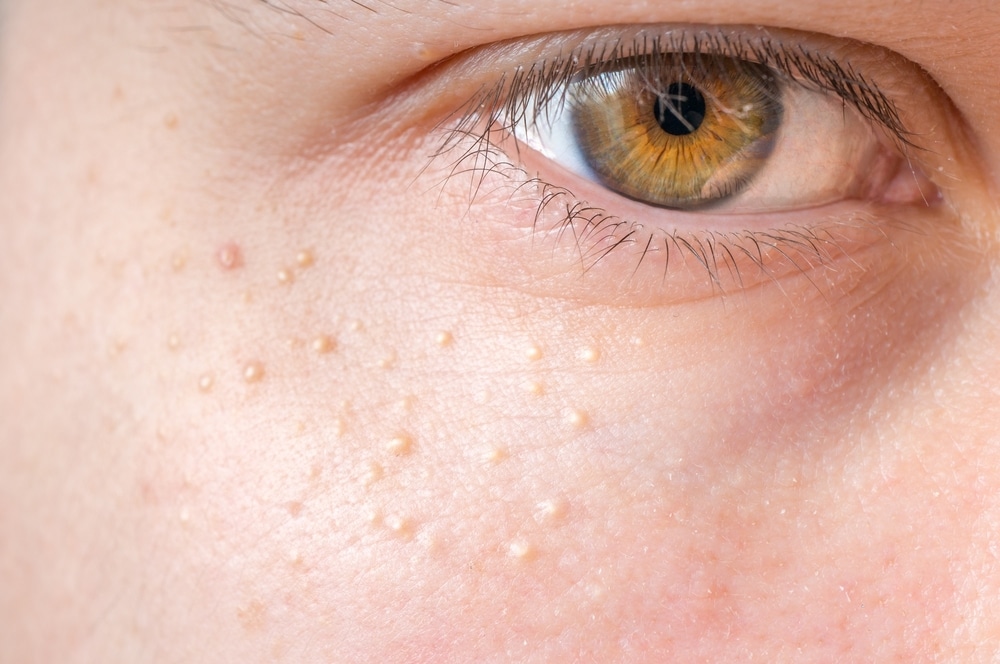Have you ever experienced small, hard white bumps under the surface of your skin and mistaken them for whiteheads? Chances are you probably have milia.

Milia often occurs around your eyes, eyelids and cheeks and is commonly caused by the build up of dead skin cells (also known at keratin), which then become trapped near the surface of the skin. If this build up doesn’t remove itself naturally, it eventually becomes a cyst and forms that white bump. Whilst this condition is most common in young babies, it can also occur in people of all ages and also both sexes.
What Are The Different Types Of Milia?
Primary Milia
Described above, this condition is caused by keratin getting trapped beneath the surface of the skin, forming a cyst as a result. The Primary condition can disappear in a few weeks or it can last up to several months.
Neonatal Milia

This is when these white bumps appear in newborns, and is most likely seen in the face, scalp and upper torso. Whilst 40% of newborn babies are believed to have milia, these cysts are expected to be healed within a few weeks.
Other less common milia conditions include:
- Multiple eruptive milia – these cysts show up on the face, torso and upper arms and can cause these areas to itch
- Milia en plaque – this often appears around the eyelids, ears, cheeks and jaw and is a condition linked with autoimmune or genetic skin disorders, such as discoid lupus or lichen planus. It most likely occurs in middle-aged women and the cysts can be several centimeters in diameter.
- Traumatic milia – this condition happens when part of the skin has been injured or irritated, for example by a rash or burns. These cysts can become irritated, making them appear white in the center and red along the outer edge
- Drug-related milia – whilst it is relatively rare, cysts can emerge from the use of steroid creams in the area it is applied
What Treatmen Options Are Available For Milia?

Whilst the condition can be frustrating, they can disappear on their own. If it doesn’t bother you too much they are best to be left alone for a while to see if they clear up within a few weeks.
If you’ve given it some time and want rid of them there are both professional treatments and home remedies you can try to remove these cysts. One thing you absolutely should not do is to try and remove them yourself. This will only irritate, damage and scar your skin, and the problem still won’t be gone.
Medical Treatments for Removing Milia
- De-roofing – a doctor or skin professional will use a sterile needle to remove the cyst. This is typically a quick and painless procedure that you can also get done in salons. Do not try and do this yourself
- Cryotherapy – this treatment sees the cysts frozen off with liquid nitrogen. The area will likely blister and swell before disappearing after a few days
- Curettage – a doctor will numb the affected area and remove the cyst, followed by sealing the skin up using a hot wire
- Minocycline – this is an oral antibiotic which is particularly helpful in treating milia en plaque
Excluding minocycline, all of these treatments carry a risk of scarring. It does not cause scarring itself so it’s important to consider all your options before undergoing treatment.
Home Remedies For Milia

Before undergoing medical treatment, You could also try the following home remedies first,
- Steam open the pores. You can do this by sitting in the bathroom and running a hot shower or popping your head of a bowl of hot water
- Clean the affected area daily – use a soap that will not irritate your skin. Ensure you take off any makeup before bed and if you wear a lot, it may be worth double cleansing to ensure your face is completely clean
- Use sunscreen – high protection sunscreen is particularly helpful
- Exfoliate the area two or three times a week – doing this any more and you may irritate the skin.
- Try topical retinoids – these creams and gels derived from Vitamin A are used to treat acne and other skin issues which you could try to resolve.
- Make lifestyle changes – this can vary from getting more sleep, stopping smoking, avoiding excess exposure to the sun, limiting your intake of cholesterol-rich foods, for example meat and eggs, upping your intake of Vitamin D and steering clear of heavy oil-based skincare
Now you should be all clear on these milk spots, there will be nothing stopping you from mistaking them from whiteheads and ensuring your skin remains at its healthiest.

